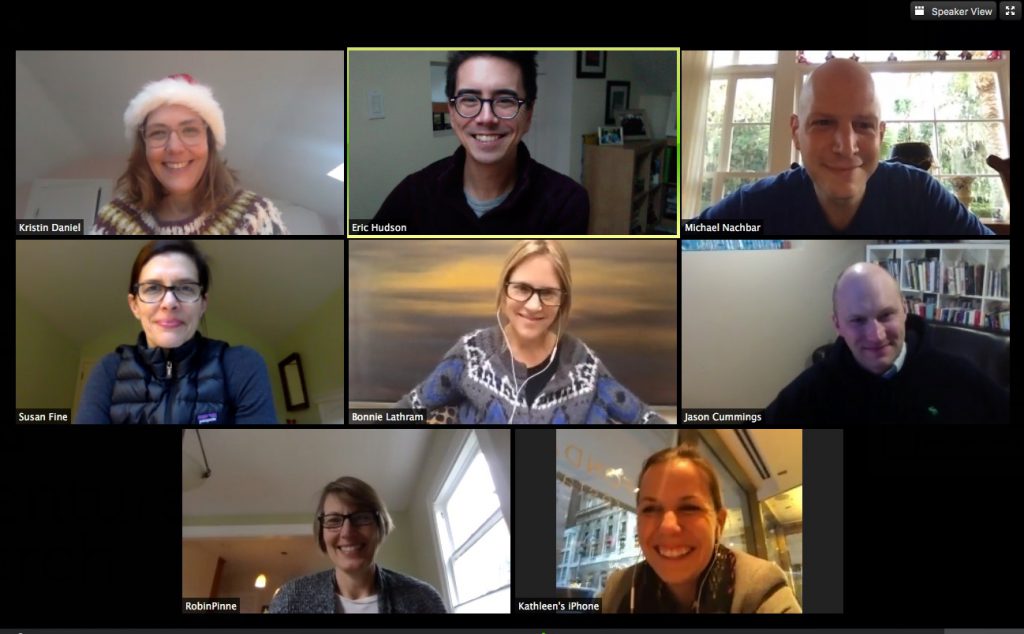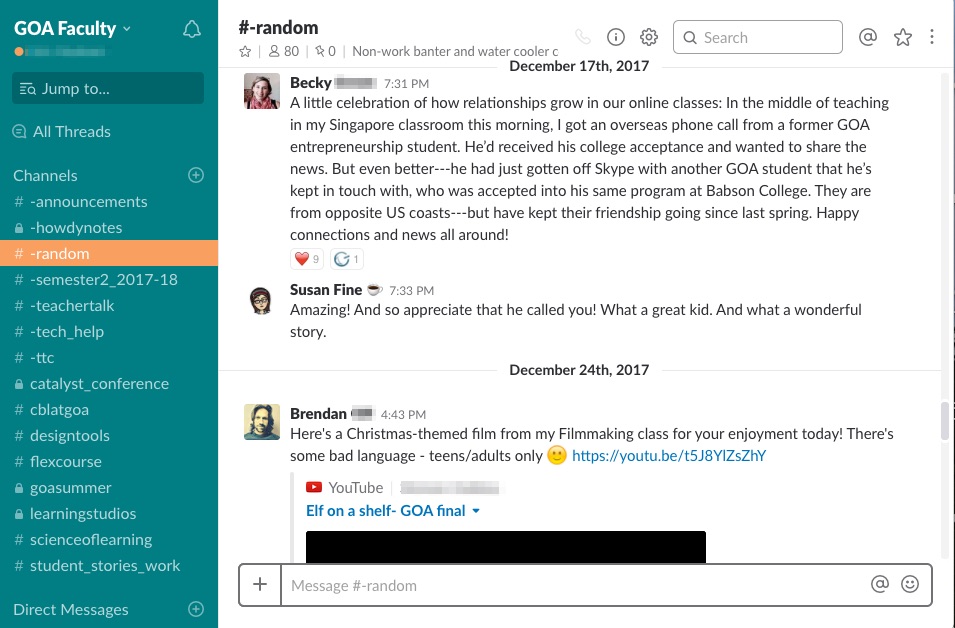Seven Ways to Build a Modern Professional Learning Network
Before my son traveled back to school, after he spent winter break with us and his phone, I asked him whether he looked forward to reconnecting with friends on campus. Silly, naive, old-fogey me. His response: “We’ve been in touch all break; there’s not much to catch up on.” In a world like his, people never lose touch.
While I live a slower version of the connected life, I struggle, as I believe he will one day (when professional life encroaches on social life), to determine how much and what type of “staying in touch” I want. With choices from social media to email, text, Slack, FaceTime, websites, digital news, blogs, apps, and collaborative docs, what to embrace, avoid, and share creates quite the cognitive load.
What hasn’t changed — for me or for my son — is the opportunity to connect with humans. My son does this using his network, which danah boyd’s insights about teenagers’ social networks helped me understand and value. In any form, human networks matter hugely to me, too.
For four years, I’ve been an instructional designer at GOA, using technology to connect all day, every day with educators across our network, far from my home in Redmond, Washington. I use Zoom, whose interface (ironically) reminds me of The Brady Bunch, circa 1972, for meetings. I have myriad exchanges in Slack, a tool that’s become our global town square and kaffeeklatsch. I cherish these connections, especially now, when inspired ed initiatives are gathering momentum through their catalyzing calls for change. This work of forming relationships via technology (and coaching teachers on how to do the same with their students) has also opened my eyes to new ways to form networks.
So, how do we, like my son, learn how to stay connected no matter where we are and what we’re doing? What does “network” even look like now? This is a work in progress for me, but I’ve identified seven ways to build a modern professional network.
Redefine “network.”
Forming a network is more egalitarian than ever: you can follow, comment on, reach out to, or access content from nearly anyone. Try to curate with the what, why, and how you want to learn in mind. Make decisions; resist the numbers game. Keep in mind: whether someone accepts your LinkedIn connection or not, follows you on Twitter or not, you can learn from that person’s content. A blogger you follow is part of your network. A thought leader whose social media feed you consume is part of your network.
Identify diverse means to learn and engage.
Be open to new ways to network. Given my job, I often get, “Online isn’t the same.” That’s true, but figure out what you’re seeking; then determine the best means to find it. Question assumptions: several physics teachers connected on Twitter then pursued “Collaboration at a Distance.” Try a Meetup or a PechaKucha or the most successful MOOC of all time, Learning How to Learn (and their newsletter, Cheery Friday Greetings). While attending the Nueva Innovative Learning Conference, I made new friends, met new ideas, and crafted “beautiful questions.” I can now extend those relationships via email and Twitter. Speaking of, there are Twitter chats for educators, where people “meet.” And, you can read the convos later if you can’t attend in real time or prefer this approach.
Refresh your routine.
I connect all day with people online, so I seek ways to connect offline. As GOA’s site director for the Mastery Transcript Consortium, I attended an in-person workshop with 70+ educators, all starting to reimagine school. During the workshop, a Puget Sound cohort formed. I’m glad we’ll meet face to face. If you work in a brick-and-mortar environment, seek out online opportunities. I’ve taken several MOOCs where you can engage with humans: in Tina Seelig’s MOOC on creativity, we had group projects. There’s also the famous ModPo, where groups gather online and off, all over the country and the world, to pursue poetry
Look for your people in unlikely places.
Just the other day I made a new friend at my gym. At 5:45 am. She works in Human Resources at Microsoft. Within minutes we were talking about competencies and what she seeks in those she recruits and how school does (or doesn’t) lead people to develop essential work skills. I know our conversation will continue. Can’t wait to learn more from her.
Believe that people want to connect and make time for what matters.
We are not too busy for what we care about. Find your people online; invite them to connect. While some might gather in person, groups could meet online or some combo of settings. There’s a group that gathers in a New Orleans cafe to knit on Sundays. I’m confident I could get a group to gather, knit, and talk about the book I can’t stop thinking about, The End of Average. I’d like to be in a charming cafe, sipping a latte, but I could do something similar online (and especially because I now own this…).
Be bold, then bolder.
Reach out to people you admire; invite them to connect. People love to tell their stories. Simply asking to learn from them can lead to yes. Continue being bold and build a personal board of advisors. Jim Collins describes this as “a set of tribal elders you turn to for guidance at times of ethical dilemma, life transitions, and difficult choices, people who embody the core values and standards you aspire to live up to.” Imagine if you not only built this board, but also leaned on it!
Invest in what matters.
You. Take time to determine how you want to grow and make change and how your network of relationships, connections, and collaborations enable you to do so.
I’d like nothing more than to help every educator find a network of trusted colleagues who will challenge and inspire, help with gaining perspective, and collaborate around how we can serve kids as well as possible, especially now with a changed and changing world that requires reimagining how students learn, how teachers teach, and how schools operate.
We can do this if we find our people and extend our tribes and our ideas; look for others who want to dig in, collaborate, and rethink what’s possible. Seek varied ways to do so in terms of what, when, where, and how. And, connect with me on LinkedIn or Twitter!
Global Online Academy (GOA) reimagines learning to empower students and teachers to thrive in a globally networked society. Professional learning opportunities are open to any educator. To sign up or to learn more, see our Professional Learning Opportunities for Educators or email hello@GlobalOnlineAcademy.org with the subject title “Professional Learning.” Follow us on Twitter @GOALearning. To stay up to date on GOA learning opportunities, sign up for our newsletter here.


